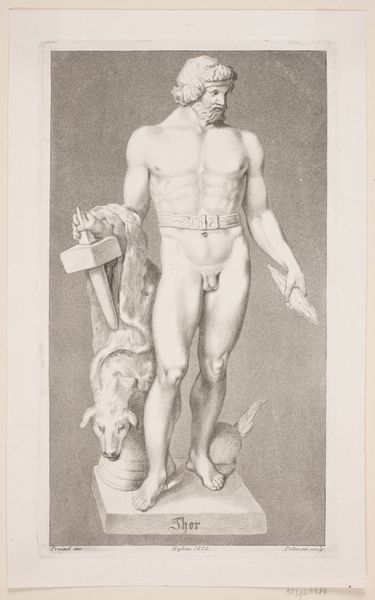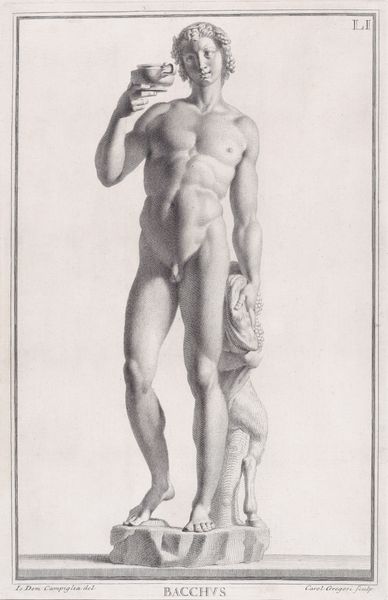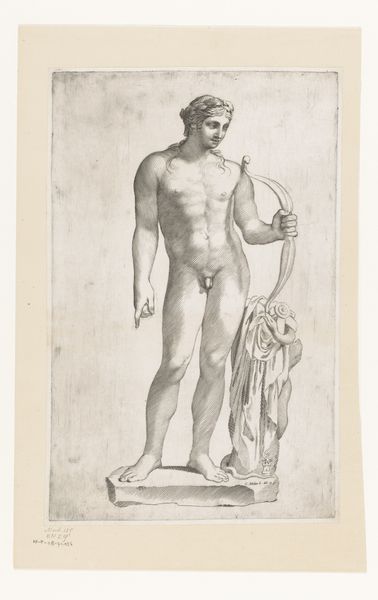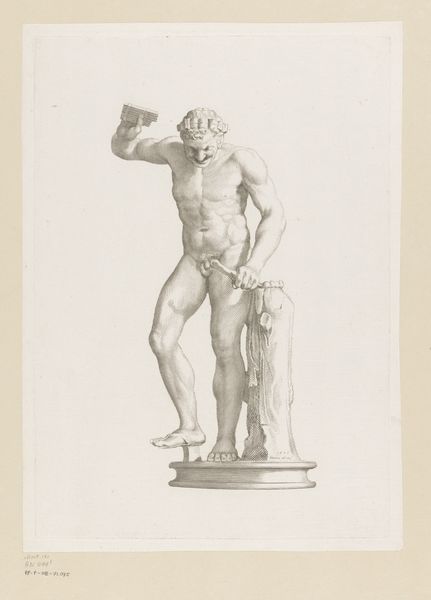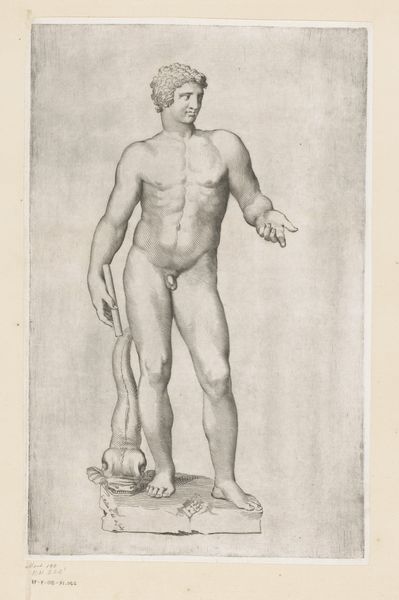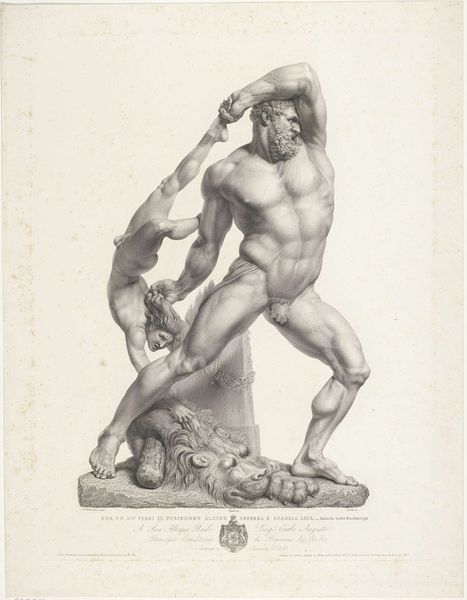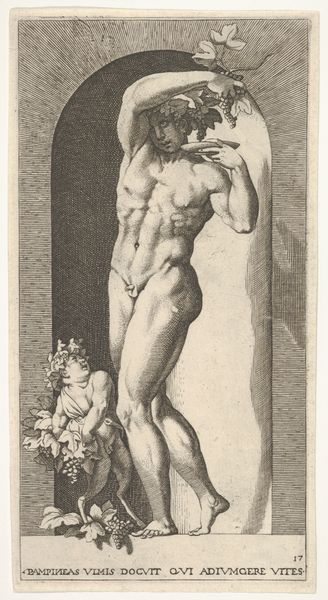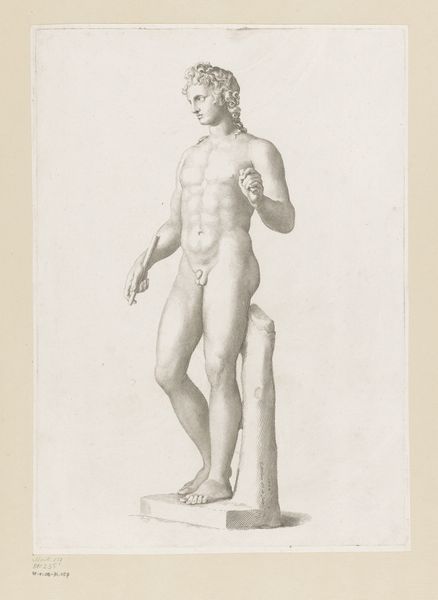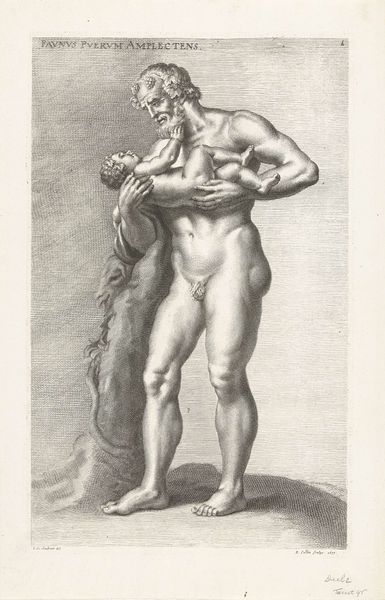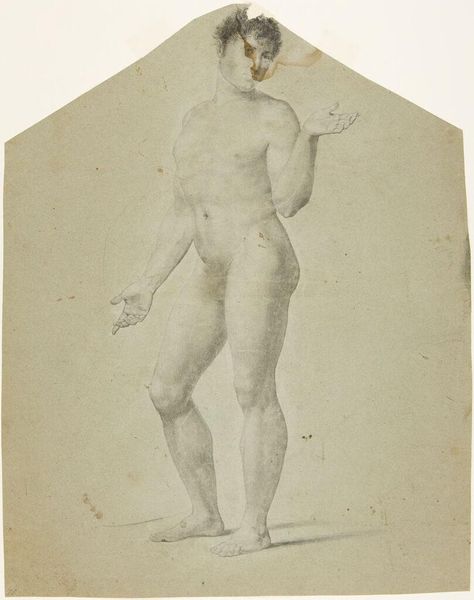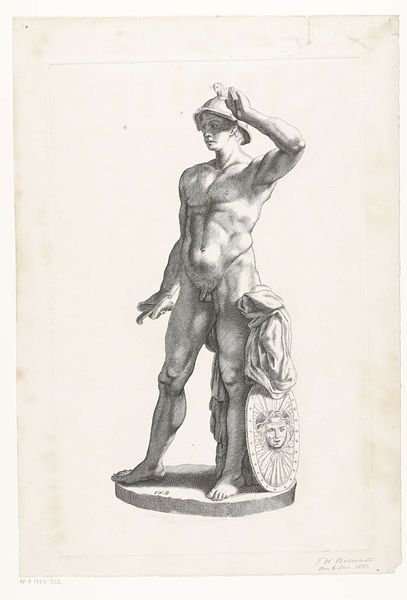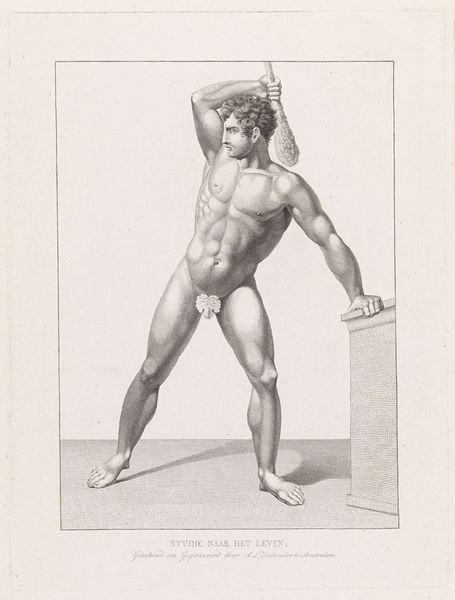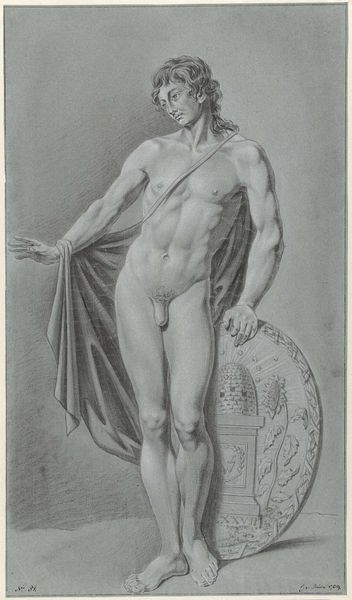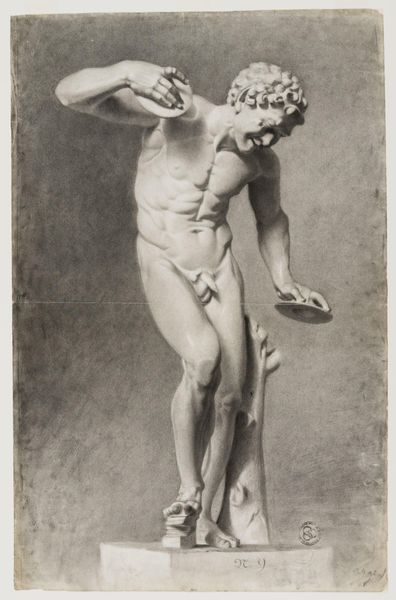
print, etching, engraving
#
neoclassicism
# print
#
etching
#
greek-and-roman-art
#
figuration
#
nude
#
engraving
Dimensions: 212 mm (height) x 126 mm (width) (plademaal)
Curator: Looking at "Thor," an 1822 print by Søren Henrik Petersen currently housed at the SMK, my immediate reaction is drawn to the tactile quality achieved in this monochrome print. Editor: There’s a stark simplicity that also hints at latent power, wouldn’t you agree? The figure, rendered in etching and engraving, stands nude with his attributes—his hammer and cloak and also a dog looking down with an implicit deference. Considering how neoclassical artists typically portray idealized male forms, what is revealed in this work? Curator: It’s difficult not to perceive a degree of cultural appropriation, viewing this 19th-century representation of Thor. We must consider that the neoclassical obsession with idealized forms was often in service of broader nationalistic agendas. There's the very act of transforming Norse mythology through the lens of Greek aesthetics. We are seeing that appropriation and, some could say, subordination of one cultural narrative into another. The labor to execute a detailed neoclassical engraving reflects this. Editor: But are we ignoring the impact of technology at the time? The printmaking process, using materials such as copper plates and acid, allows for a democratization of art that previous eras didn't see. It enables dissemination and accessibility. So while appropriation could be seen as a tool for social hierarchy, what about its emancipatory effects through accessible means? Curator: It's not a simple binary. While printmaking widened access, the *subjects* of these prints were largely aimed at educated elites, not necessarily creating truly egalitarian cultural consumption. I think it speaks to power relations more so than to social leveling. To understand how Thor here serves gendered and racial ideologies, one has to think about who consumed this image, how the body is a construct for viewers and power, what political function that has to normalize whiteness, strength and European traditions. Editor: I see your point. By focusing on production, we need to be cognizant of both democratizing potentials and reinforcing mechanisms for hierarchies of power at play. Curator: Precisely. Understanding Petersen's "Thor" means grappling with both the material means of its production and its insertion into narratives around identity. Editor: It’s a negotiation between process and ideology. Both shaping how the viewer engages. Curator: Ultimately it seems an engagement between production and an evolving identity within culture that needs understanding to appreciate fully.
Comments
No comments
Be the first to comment and join the conversation on the ultimate creative platform.
